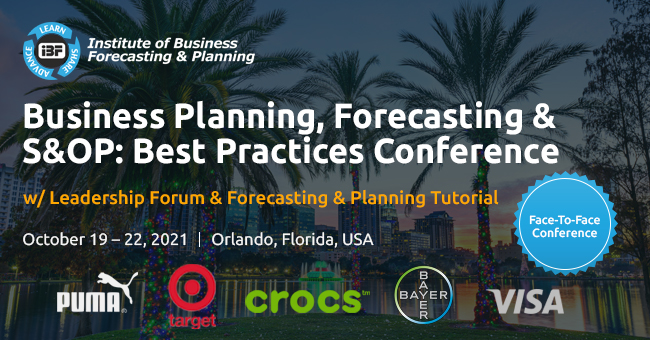Successful S&OP implementation is not a law set in stone; each business is unique and has its own dynamics. Getting started can be one of the biggest challenges and knowing where to begin may be overwhelming.
How do we segregate the business and do we start with a certain geography or product line? Which meeting or process step should we focus on first and do we need all of them out of the gate? Like the answer to so many things – it depends.
There are a few options and each has pros and cons. Traditionally, you’d start with a volume forecast for a family or group of product families as a pilot. This involves all of the functions and provides a good baseline for S&OP process. From here, consensus is built, supply plans are developed and resource reviews adopted – these are the fundamentals of an end-to-end S&OP monthly process. We then add on other families and other elements as the S&OP process continues to mature.
But this is only one way it can be done. The following are starting points to launch an S&OP process. Which one you choose depends on the particular dynamics of your organization.
By Company, Business Unit Or Profit Center
One logical approach is to align to the P&L which is generally structured by business unit. Here you may have multiple business divisions or profit centers that roll up to the parent organization but each strategic business unit produces revenue and is responsible for its own costs.
Many times, each business unit has unique missions and objectives and planning is done separately from the parent organization. Starting in one of these divisions allows you to align a new S&OP process to the goals and structure of the unit at hand. Starting at a division/unit level provides a manageable first step.
By Hierarchy, Product, Brands, Geography Or Channels
Another very common way is to look at your current planning hierarchies and take a subset of one or more of them. Aggregation generally occurs over product, location, and customer and a good starting point may be one or any combination of those that fit strategically. If you go by product you may want to use four or five different item families. This can be done by choosing a brand and planning for the families under that brand.
For location, your company may be separated by geography and it may make sense to start in a single region then expand into others as you go. For channels, some businesses may be separated out by types of customers or the way they go to market. Starting with a subset of any of these allows you to get quick wins in planning and show value to other areas of the business.
Business Functions Or Processes
It is not always necessary that you start with a demand review and build from there. S&OP is a cross-functional process that will in time integrate everyone to a unified set of assumptions for coordinated decision making.
As a starting point, you may find an ally in one of them to get the ball rolling and build a process. Instead of a business unit or specific product you may find it advantageous to begin with a product review or help solve for a recurring planning gap for another function. When I worked with one organization that was very product centric and had strong product development, it made sense to begin with a product review that captured the key players and improved their ability to go to market.
Use An S&OP Maturity Model Before You Start
To get a sense of where your S&OP is at and the gaps you need to fill to progress to the next stage of S&OP maturity, use IBF’s S&OP Maturity Model Self-Assessment for free. It’ll give you practical recommendations to improve your planning and valuable resources to facilitate advancement.
Think Big, Start Small
Start with something easy to manage. It is generally much better to go ahead and think big, but start small and build on success. Many companies are overly ambitious at the start: their priority is a comprehensive S&OP process with all the bells and whistles. But when their expectations aren’t met, people are disappointed and pull out. Think big but start small!
For more insight into forecasting and planning best practices, join me at IBF’s Business Forecasting, Planning & S&OP Conference in Orlando, held from October 19-22 at the Wyndham Orlando Resort. The biggest and best event of it’s kind, it’s your opportunity to learn best practices in S&OP, demand planning and forecasting, and network and socialize in a fantastic setting. See here for details.


